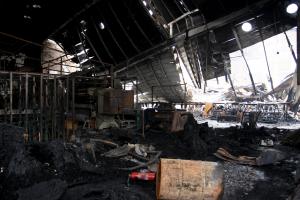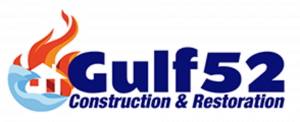Understanding the Long-Term Structural Impact of Extreme Heat Exposure
Structures exposed to extreme heat suffer a variety of physical and chemical changes that can compromise performance, reduce service life, and increase repair costs. These impacts often remain hidden until noticeable failures occur, making early detection and proactive maintenance critical.
Earl Carr, Jr., president of Gulf 52 in Hammond, Louisiana, emphasized the importance of understanding how extreme heat influences different building materials over time.
"Extreme heat exposure initiates subtle but serious changes inside structural components," said Carr. "Ignoring those changes leads to cumulative damage that can eventually result in major failures."
Concrete, one of the most widely used building materials, is highly vulnerable to heat degradation. Prolonged high temperatures can cause thermal expansion, creating internal stresses that weaken the bond between cement paste and aggregate. When moisture trapped within concrete heats up, it expands into vapor, forming internal pressure that can cause microcracks or surface spalling. Over time, these minor defects grow, reducing load-bearing capacity and accelerating deterioration.
Steel, while known for its strength, also loses integrity under prolonged heat exposure. Elevated temperatures cause steel to expand, and if the expansion is uneven, it introduces additional stress into surrounding structures. Heat exposure also reduces steel’s yield strength, making beams, columns, and fasteners less capable of carrying designed loads. Once the material cools, the deformation caused by expansion often remains, leading to misalignment, warping, or permanent structural weakness.
Wood, commonly used in residential framing and decorative elements, reacts to extreme heat through both physical and chemical changes. High temperatures dry out wood fibers, causing shrinkage, warping, and increased brittleness. Repeated heating and cooling cycles accelerate these effects, leading to the loss of structural rigidity. Heat can also alter the lignin and cellulose structure of wood, changing its long-term mechanical properties and making it more susceptible to decay.
Masonry materials such as brick and stone generally perform well under normal temperature fluctuations but can degrade when subjected to extreme or prolonged heat. Mortar joints are particularly vulnerable; heat causes expansion and contraction cycles that weaken the bond between bricks or stones. Hairline fractures may develop, allowing moisture penetration, which further accelerates deterioration when temperatures return to normal ranges.
Roofing systems experience some of the most direct and sustained exposure to heat. Asphalt shingles, in particular, soften under high temperatures, leading to warping, cracking, and the breakdown of protective granules. Flat roofing membranes can blister and delaminate, while metal roofing panels may expand unevenly, stressing fasteners and seams.
Insulation materials, critical for energy efficiency, also suffer under extreme heat. Foam-based insulations can degrade, losing R-value and releasing gases that compromise indoor air quality. Fiberglass insulation can settle or compress, reducing its effectiveness and creating hot spots within the building envelope.
Mechanical systems are not immune to long-term heat effects. HVAC units, plumbing, and electrical systems exposed to ambient high temperatures face additional strain, reducing operational efficiency and service life. Electrical wiring insulation may dry out and crack, leading to short circuits or fire hazards.
Carr noted that the key to mitigating heat-related structural damage lies in early detection and preventive maintenance.
"Recognizing the warning signs early helps prevent isolated issues from evolving into large-scale structural failures," Carr said. "Inspection protocols should focus on material deformation, cracking, moisture intrusion, and evidence of accelerated wear."
Thermal imaging inspections offer a non-invasive method for identifying hidden damage caused by heat exposure. By detecting temperature differentials across building surfaces, inspectors can locate areas where insulation has failed, moisture has infiltrated, or structural materials have weakened.
Material selection and design practices also play a role in long-term resistance to heat. High-performance concrete mixes, heat-resistant coatings, fire-treated lumber, and reflective roofing materials help reduce the impact of sustained high temperatures. Proper ventilation, shading systems, and thermal breaks within construction assemblies further protect structures from prolonged heat-related stress.
Post-disaster recovery planning should also account for extreme heat exposure. Structures subjected to wildfire events, industrial fires, or extreme weather conditions must undergo thorough evaluations to assess latent heat damage, even if immediate visual damage appears minor. Restoration strategies should include not only cosmetic repairs but also reinforcement or replacement of compromised structural elements.
Long-term planning for climate resilience must consider the growing threat posed by extreme heat. Routine maintenance schedules, upgraded building materials, improved design practices, and awareness of thermal aging processes all contribute to greater structural durability and occupant safety.
As temperatures rise and heat events become more common across regions such as Louisiana, Texas, Mississippi, Alabama, Arkansas, and Georgia, understanding the hidden toll of extreme heat on structures will remain an essential part of risk management and property stewardship.
Morgan Thomas
Rhino Digital, LLC
+1 504-875-5036
email us here
Visit us on social media:
Facebook
Legal Disclaimer:
EIN Presswire provides this news content "as is" without warranty of any kind. We do not accept any responsibility or liability for the accuracy, content, images, videos, licenses, completeness, legality, or reliability of the information contained in this article. If you have any complaints or copyright issues related to this article, kindly contact the author above.
LEDFoil's in-ice LED display to bring a new era of advertising to HC Dukla Jihlava
TIGHITCO LATIN AMERICA ANNOUNCES NEW COMMERCIAL AGREEMENT WITH AIRBUS CANADA
Mindall CRM Enters the UAE Market with Advanced PropTech Tools and Developer Integrations for Real Estate Professionals
Kalendarium
Więcej ważnych informacji
 Jedynka Newserii
Jedynka Newserii

 Jedynka Newserii
Jedynka Newserii

Prawo

Trwają dyskusje nad kształtem unijnego budżetu na lata 2028–2034. Mogą być rozbieżności w kwestii Funduszu Spójności czy dopłat dla rolników
Trwają prace nad wieloletnimi unijnymi ramami finansowymi (WRF), które określą priorytety wydatków UE na lata 2028–2034. W maju Parlament Europejski przegłosował rezolucję w sprawie swojego stanowiska w tej sprawie. Postulaty europarlamentarzystów mają zostać uwzględnione we wniosku Komisji Europejskiej w sprawie WRF, który zostanie opublikowany w lipcu 2025 roku. Wciąż jednak nie ma zgody miedzy państwami członkowskimi, m.in. w zakresie Funduszu Spójności czy budżetu na rolnictwo.
Konsument
35 proc. gospodarstw domowych nie stać na zakup mieszkania nawet na kredyt. Pomóc może wsparcie budownictwa społecznego i uwolnienie gruntów pod zabudowę

W Polsce co roku oddaje się do użytku ok. 200 tys. mieszkań, co oznacza, że w ciągu dekady teoretycznie potrzeby mieszkaniowe społeczeństwa mogłyby zostać zaspokojone. Jednak większość lokali budują deweloperzy na sprzedaż, a 35 proc. gospodarstw domowych nie stać na zakup nawet za pomocą kredytu. Jednocześnie ta grupa zarabia za dużo, by korzystać z mieszkania socjalnego i komunalnego. Zdaniem prof. Bartłomieja Marony z UEK zmniejszeniu skali problemu zaradzić może wyłącznie większa skala budownictwa społecznego zamiast wspierania kolejnymi programami zaciągania kredytów.
Problemy społeczne
Hejt w sieci dotyka coraz więcej dzieci w wieku szkolnym. Rzadko mówią o tym dorosłym

Coraz większa grupa dzieci zaczyna korzystać z internetu już w wieku siedmiu–ośmiu lat – wynika z raportu NASK „Nastolatki 3.0”. Wtedy też stykają się po raz pierwszy z hejtem, którego jest coraz więcej w mediach społecznościowych. Według raportu NASK ponad 2/3 młodych internautów uważa, że mowa nienawiści jest największym problemem w sieci. Co więcej, dzieci rzadko mówią o takich incydentach dorosłym, dlatego tym istotniejsze są narzędzia technologiczne służące ochronie najmłodszych.
Partner serwisu
Szkolenia

Akademia Newserii
Akademia Newserii to projekt, w ramach którego najlepsi polscy dziennikarze biznesowi, giełdowi oraz lifestylowi, a także szkoleniowcy z wieloletnim doświadczeniem dzielą się swoją wiedzą nt. pracy z mediami.










.gif)

 |
| |
| |
|